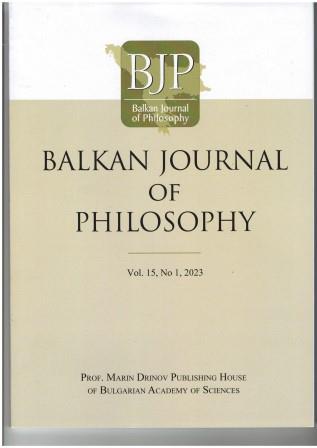Creativity through autonomy: The real challenge of the computer art today
Creativity through autonomy: The real challenge of the computer art today
Author(s): Nikoleta KerinskaSubject(s): Philosophy, Social Sciences, Fine Arts / Performing Arts, Epistemology, Social Philosophy, Special Branches of Philosophy, Sociology, Philosophy of Science, Sociology of the arts, business, education, Sociology of Art
Published by: Институт по философия и социология при БАН
Keywords: computer art; artificial intelligence; autonomy; creativity; interactive art.
Summary/Abstract: This paper questions the notion of creativity found in certain artworks produced with A.I. technologies. The artistic examples concerned are: The Giver of names by David Rokeby, Oscar by Catherine Ikam and Louis Fléri, and Emotion Vending Machine by Maurice Benayoun. These artworks were selected because they stand out for their autonomous behavior in front of the human public. In this context, creativity is revealed as a consequence of the functional autonomy, which is very typical of these pieces of art. The intention is to establish a relationship between the notion of autonomy and that of creativity, reviewing their meanings and applications in philosophy and in the field of life science. For this, the notion of autonomy is approached from Kant’s definition as a decisive value indicating the moral principle that defines the individual and his free conduct, and then approached as a property of life from Francisco Varela and Humberto Maturana’s research. Autonomy is also a tendency that characterizes a general process of technical lineages according to Chapoutier and Kaplan. In all these studies, autonomy presents complementary meanings that help us to draw parallels with the notion of creativity. The analyzed artworks allow us to visualize some ways of simulating creativity, while offering unique aesthetic experiences. From a broader perspective, this paper promotes the vision that some computer artworks open up as multi-sensory and multi-conceptual universes, projecting original ideas, and making us feel the very human substance of these technologies. Interacting with these artworks, we are placed at the heart of the aesthetic metamorphosis provoked by the phenomenon of the computer revolution.
Journal: Balkan Journal of Philosophy
- Issue Year: XV/2023
- Issue No: 1
- Page Range: 69-76
- Page Count: 8
- Language: English

